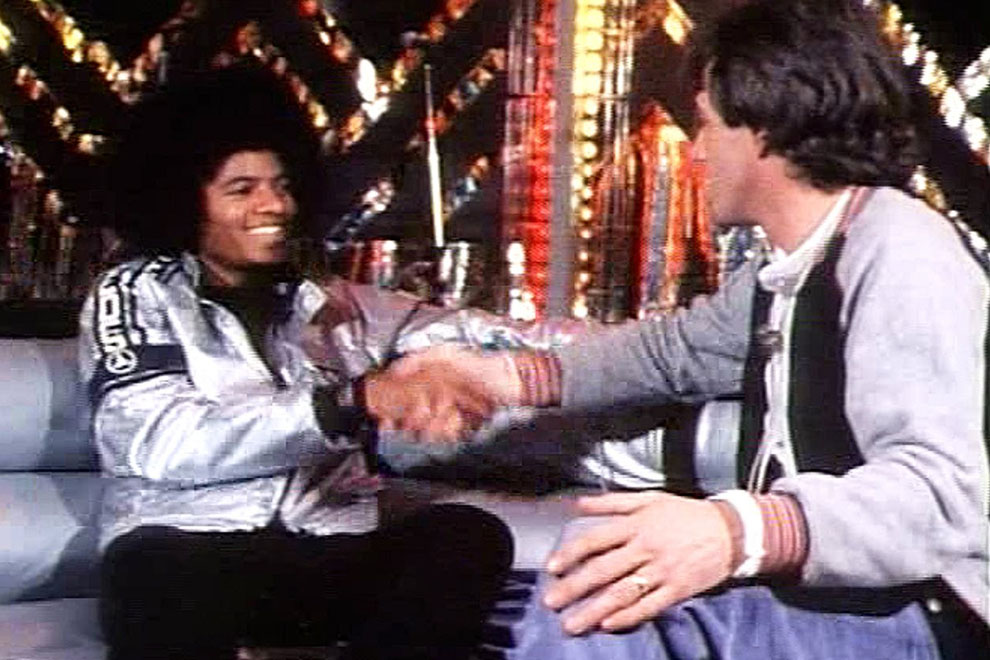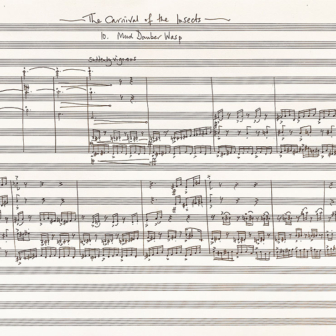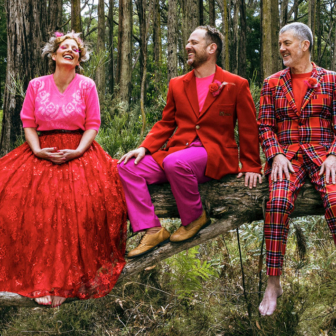After the fiftieth birthday of Dr Who and the thirtieth anniversary of SBS’s Dateline comes the fortieth of Countdown, celebrated on ABC with a two-part commemorative special, Countdown: Do Yourself a Favour, hosted by Julia Zemiro. Countdown is long gone (its final episode went to air in July 1987) but Dr Who rides on, apparently going from strength to strength. Dateline, meanwhile, which looked set to build on its impressive track record through next year, has been one of the first victims in the current round of cuts in public broadcasting.
Two weeks after I wrote about Dateline last month, plans were announced to slash the program’s airtime to thirty minutes, “lighten” the story repertoire and largely disband the dedicated team of reporters and producers. SBS’s attempted reassurance – “Dateline will be back in 2015 with a full season of original content and a full commitment to investigative journalism and rigour, telling ground-breaking and compelling stories in effective ways” – is a bit hard to swallow, given that what has happened amounts to a talent purge.
The video journalists and producers who have served Dateline are a rare breed. Their skills are extraordinary. A combination of knowledge, vision, capacity for strategic thinking in emergencies, fierce journalistic integrity, verbal cogency and screen presence should be duly valued by any broadcaster. The talent stream at Dateline was a veritable seam of pipe opal, but as a marketing proposition, it has been consigned to the too-hard basket. Apparently, its exchange value in the ratings figures just isn’t strong enough.
That’s a genuine problem for the SBS management, though compared to the challenges met by a video journalist reporting from a war zone or doing clandestine interviews in country under violent dictatorship, it doesn’t rank among the most demanding calls on human ingenuity. If the 2015 Dateline offerings will be largely composed of stories bought from other networks, that means there’s a global market out there, and with first-rate product of our own, shouldn’t we be selling as well? Perhaps it’s time for our broadcasting executives to go to school with some of the great communications entrepreneurs who built the public broadcasting repertoire in the first place. Or with the producers at HBO or the Danish National Broadcasting Corporation, who have discovered all over again that sheer talent is the critical factor in the commercial equation, as it has always been, and that even in a rapidly evolving broadcast environment, top-quality programs can generate an unprecedented international following.
Talent is a mercurial element in public communication and a source of perpetual fascination in a medium where commercial entertainment programming is now almost entirely given over to versions of the talent contest. Staging the quest for an Australian Idol, for the one who has the X-factor or the Voice, has become the main game. But while the game might be all about building a humble audition contestant into a superstar, the balance of power remains decisively weighted towards the marketing experts who convert talented individuals into marketable products, and the process of conversion is the core business of the program.
Countdown, as the forebear of Idol and its progeny, had an entirely different dynamic. The performers – some well-established, some more recent discoveries – appeared not as wannabe stars but as acknowledged presences on the scene. And in the mid 1970s, the scene itself was much less controlled. No one knew where it was going; managers and producers were too busy trying to keep up with waves of breakout performers to be concerned with steering them in some preconceived direction. The unpredictability with which new talents appeared was part of the excitement, and an appearance on Countdown could be enough to turn them into celebrities overnight.
That euphoric atmosphere is still breathable in the ABC’s two-part commemoration feature, broadcast on 16 and 23 November (and available on iView until 30 November). In its early years, the program had all the sophistication of a teenage party held in a large backyard shed (actually Ripponlea Studios in Melbourne). Songs were performed live on a small platform only metres away from the gyrating audience members, and presenter Molly Meldrum, wearing whatever t-shirt he had found in the laundry basket – the trademark Stetson hat came later – welcomed his guests in a mock lounge room area in which the floor was strewn with discarded notes. Molly never spoke to script or used an autocue. “It was chaos out there,” as John Farnham recalls.
Guests and interview subjects who now form the pantheon of pop superstars – Rod Stewart, Tina Turner, Madonna, Elton John, Suzi Quatro, Bette Midler, Boy George, Freddie Mercury – were treated like old school friends, drawn into messy, argumentative banter. No one got to have any tickets on themselves, least of all Molly. In the studio, he was ever the friendly bogan, happy to play Jumping Jack Crass in a series of appalling fancy dress interludes, including one in which he appeared as the Christmas fairy in a white satin dress, dancing about on a fly-wire. His capacity for drawing the luminaries of the pop world into his orbit may be partly attributable to this welcome invitation to drop the pretensions born of celebrity image-making, but the underlying constant was what Marcia Hines calls his “pop sensibility.”
Molly knew talent with an instinct that was a gift in itself. He scouted it after hours in the pubs and clubs of Melbourne but hardly seemed to differentiate between local discoveries and those he championed on the international scene. Abba and Boy George were among the more high-profile beneficiaries of his influence, but while his own international profile grew, the down-home persona remained unaffected. On one occasion, he took an LP out of a brown paper bag to demonstrate how you could “do yourself a favour” and save a couple of bucks on the price. Indeed. He never lost sight of the paper-bag principle, which is perhaps the most significant element in the Countdown legacy. What if you ditched the whole marketing bonanza, and had nothing but the talent?
As auditions get under way for next year’s X Factor (season 7) and The Voice (season 4), it’s a good time to revisit a zeitgeist in which excitement was something in the air rather than something manufactured by lighting designers, stylists, studio managers and television executives. What-they-want-is-what-we want-to-be is the guiding imperative for contestants in this ever more flashy, more predictable species of showtime, where however much noise they themselves manage to make (and that’s a lot), the judges will always make more, because it is they who own the territory.
Yet by some irony of cultural evolution, the judges are a legacy of Countdown. Mark Holden and Marcia Hines were stalwarts on the panel for Australian Idol from its first season in 2003. (Holden stayed for five seasons and Hines for the whole seven.) In the anniversary special, it’s arresting to see them again in their pre-makeover days, when they were just… well, just wonderful singers, carrying the music with fresh, unselfconscious verve. Kylie Minogue recalls being in the Countdown audience before becoming a favoured guest performer. This year she joined the panel for The Voice, and even she is starting to get that look of being half mummified by the spray-on gloss.
Countdown lasted thirteen years, finishing in July 1987 with a party send-off that was an industry-wide celebration. Its time was up, but it went off on a high. Idol, too, seems to be done and dusted. I doubt The Voice or The X Factor will see the decade out, or that their passing will be of much concern or significance.
But passing is one thing, and cutting is another. Our own cultural climate is characterised at the moment by an unhealthy zealotry about cutting. Under the guise of a demand for “efficiencies,” an underlying power game is being played out in the current round of cuts to SBS and the ABC. Malcolm Turnbull’s insistence that the savings should not have any impact on programming is disingenuous. Cutting is an exercise of control that accentuates the subordination of those who make and appear in programs to those who hold executive positions in the industry. It is they who become the arbiters of taste, second-guessing what will appeal to audiences and doing so with a high threshold of anxiety about what will not.
The consequence is that the range of offerings becomes increasingly generic and more and more limited. “Vision,” that buzzword among executives, is nowhere evident, only a set of preconceptions, with no signs of the courage, imagination or – yes – talent required for creating a vibrant broadcasting culture. •




